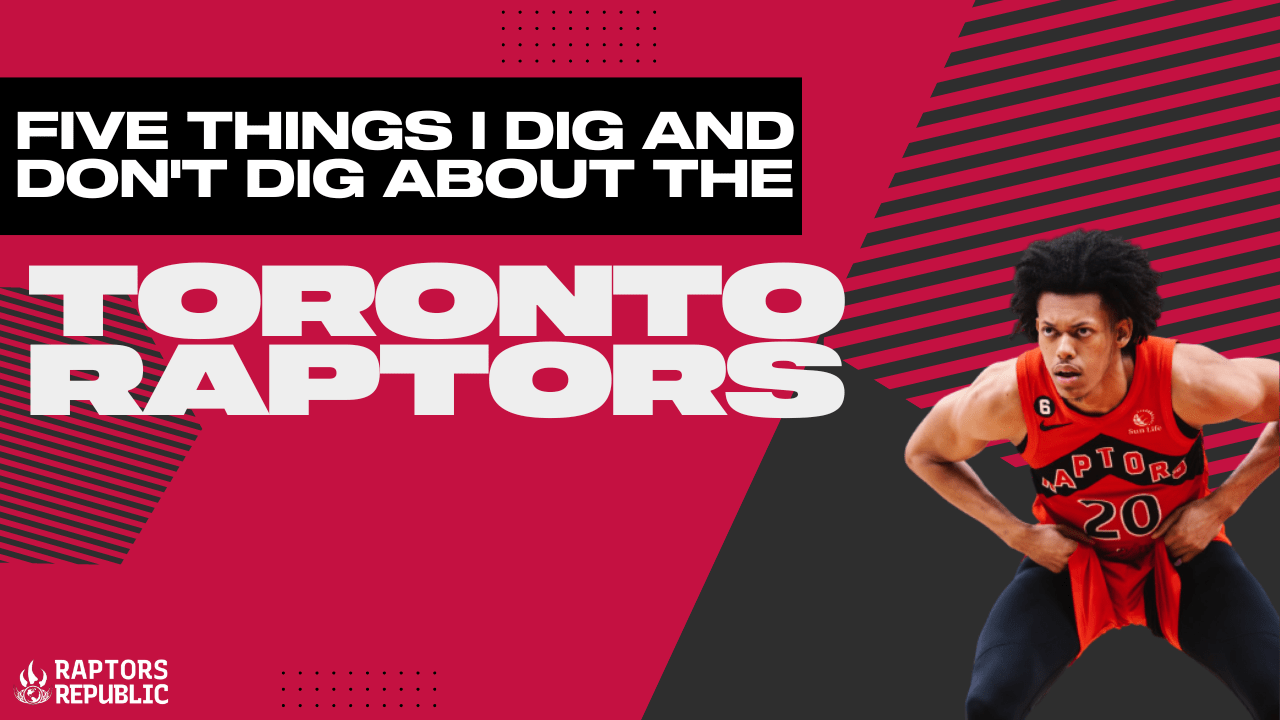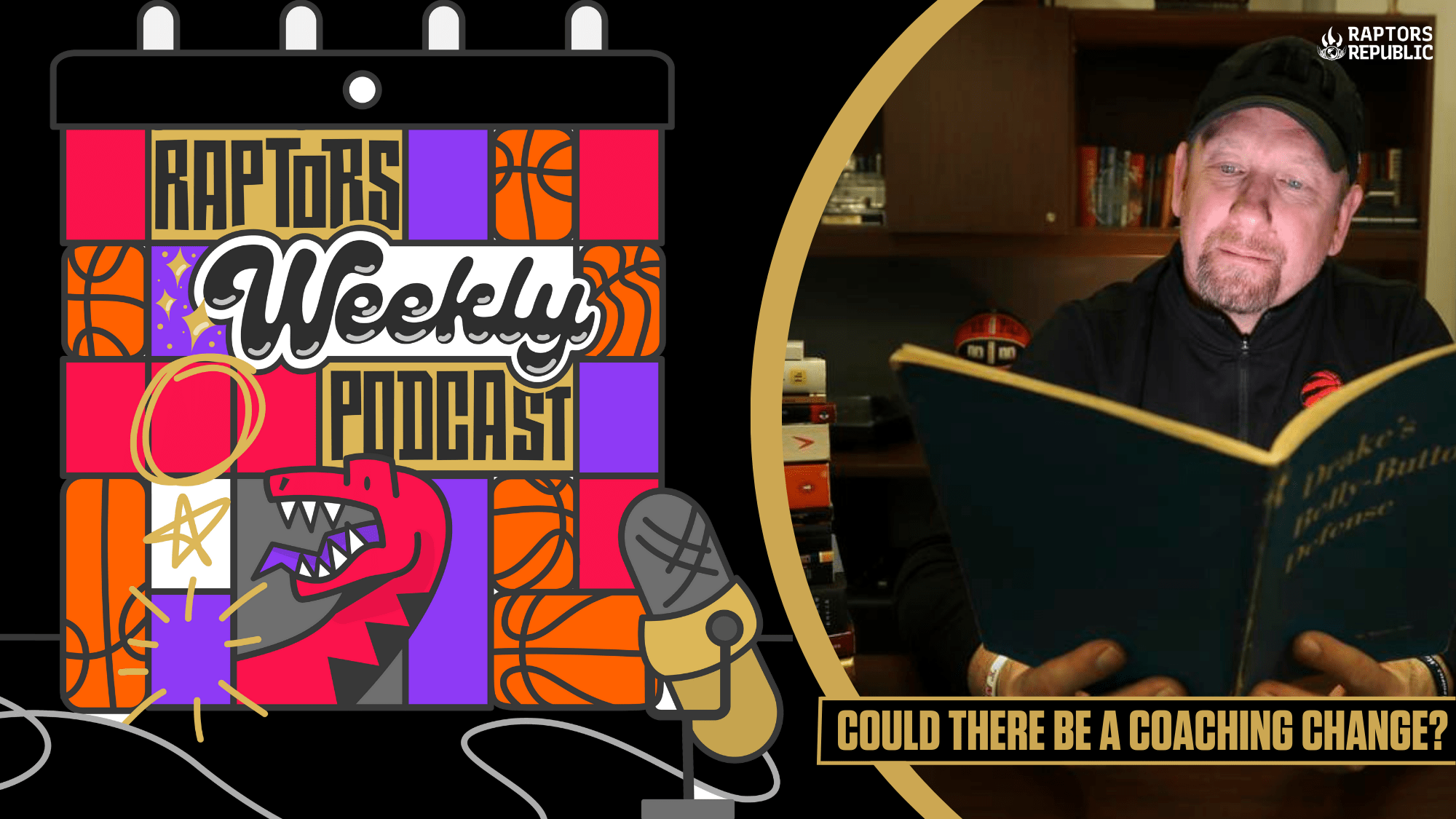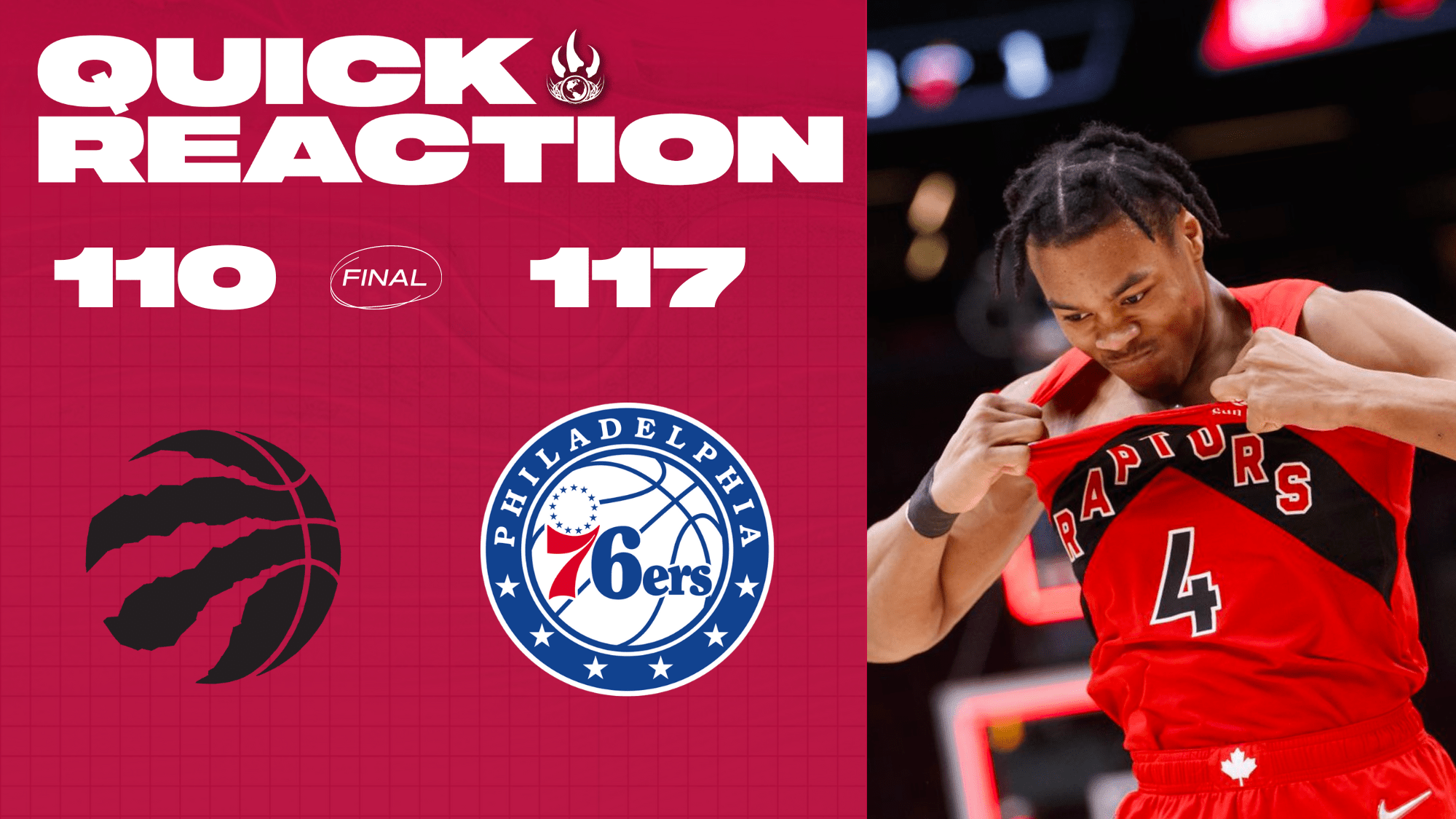1. Raptors Revitalized At-Rim
You’d never guess it. Guess it. Guess what I’m going to say. Nah, you’d never.
Toronto.
The Raptors.
The Toronto Raptors.
Yes, them.
FIFTEENTH. 1-5 thhhhh in AT-RIM SHOOTING PERCENTAGE.
Astounded? Same. Wholly and entirely. To my core.
For those of you whose disbelief did not reach the depths of our political system, the Catholic church, or WMDs in Iraq etc., that’s a HUGE deal for this team.
Read more: Five Things I Dig and Don’t Dig about the Toronto RaptorsThree years ago, they were 25th. Two years – in Tampa… – 22nd. Last year, 26th.
This team was/is not known for their at-rim success; yet, here we are. Average. Woo!
Yes, Jakob Pöltl is a big reason why. Since his arrival, the team jumped from 20th to 7th. I’ve highlighted (#2) (as has, Lou, twice) how much space he opens up both with his gargantuan screens and rampaging rolls to the rim.
We saw, firsthand, which is no big surprise, how important efficiency at the rim can be. Against a Jimmy Buckets-less Miami, on Tuesday, the Raptors shot a predictable, and putrid might I add, 8/36 (1/16 in the first half) from 3. No problema, Raps thumped them anyway.
Check that shot chart:

Whole lotta red outside 22 feet; whole lotta green within 3 feet.
And, yes, much of the general at-rim success, comes from offensive rebounding. The team is 2nd in the league in putbacks, but they were last year too. Not the whole story.
Really, it comes from improvement across the board.
| Player | 2021-2022 At-Rim % (Attempts) | Percentile | Games Played | 2022-23 At-Rim % (Attempts) | Percentile | Games Played |
| Pascal Siakam | 67% (331) | 65th | 68 | 71% (291) | 80th | 66 |
| O.G. Anunoby | 64% (210) | 55th | 48 | 65% (279) | 55th | 62 |
| Freddy VV | 56% (131) | 30th | 65 | 58% (168) | 36th | 64 |
| Scottie Barnes | 71% (299) | 81st | 74 | 66% (318) | 52nd | 71 |
| Gary Trent Jr. | 55% (120) | 35th | 70 | 64% (130) | 59th | 63 |
Pretty dramatic transformation. The core has both improved in percentage (but for Scottie) and increased in volume (but for Pascal). Efficiency arrows pointing up across the board. A very promising prospect if anyone thinks this team has a hope and a prayer (agnostically speaking) come Play[-In]offs.
2. Freddy At-Rim Alright
I want to circle back to Freddy.
I already celebrated (#2/#3) his recent excellence last week. As did, Lou with a tome.
If you look at Freddy’s numbers in the chart above, they’re not so hot. Still in the bottom third percentile for point guards. We know it too well. Freddy piercing the lane, falling away from the basket, or tossing a wide-arcing shot doused in mustard, or desperately trying to draw a call, etc., etc. They felt as successful as flipping a coin or mind-tricking at Rock-Paper-Scissors.
His low numbers may not surprise most of us; his instantaneous improvement should. In fact, ready yourself.
Since February 1st, in 21 games, Freddy’s jumped to 67% shooting at the rim (46 attempts) and the 67th percentile for point guards. Boil down further, in his last 15 games, 71% shooting (28 attempts) and 81st percentile.
Like, Woah! That’s a major blip in the at-rim-finishing radar for Freddy. In no other year of his career has he finished better than 56%.
The drastic improvement has changed the entirety of Freddy’s game. For so long, running Freddy off the three-point line was the obvious defensive decision. Freddy adapted by expanding his shooting range to Dameland. Making guys run further and further. Next, off the pump fakes, floaters and attacks at the rim. Floater hasn’t worked; still isn’t (20/72). His game somewhat plateaued (not necessarily in a bad way) to a dependency upon his three-point stroke.
All of it keeps Freddy from getting to the next level and being legitimately classified as an All-Star.
‘Till now.
3/4/5. Freddy At-Rim Born Again
It’s hard to denote what exactly is different from old Freddy to new, other than the obvious fact that he’s just finishing more. From my observation, it’s both many small changes and everything [everywhere] all at once.
To be clear, it’s not that Freddy was not doing the things below earlier in the year. He’s just been doing them more successfully and efficiently. That, I attribute to Freddy being healthier and more capable of achieving what he sets out to do.
Explosiveness
Being so small and lacking hop means Freddy operates primarily under and around the rim. Creating space, finding angles, and gaining time to get a shot off is a greater, but more integral chore, than, say, for those who soar above.
Earlier on in the season, with Freddy seeming a step slower, he had an even narrower margin to execute. A permutational effect of not fully getting by his defender promptly led to less open space, worse angles, more time for defenders to recover and/or others to help, less time to get a shot off, more of a reliance on his pull-up, and so on.
By struggling to get by initial defenders, Freddy often yielded shots off-balance, forced, or contested.
Conversely, in the last eight weeks or so, Freddy’s first step looks more explosive and purposeful. The extra oomph, in combination with his handles, blows him by first lines of defence getting him to his spots more quickly.
Change of Pace and Direction
With the threat of acceleration and speed established, Freddy is able to more effectively change his pace and direction to dupe recovering defences. Defenders anticipate a linear direction and speed towards the rim; hence, charges, helpside blocks, and chase downs.
Here is Freddy earlier in the season, attempting a change of pace split of the helpside.
There’s no initial speed burst on the split (+ Thad’s screen is paltry). Ayo Dosumnu tracks Freddy’s backside sandwiching him with an unbothered Pat Williams.
In the clips below, Freddy, again, has more liftoff at the point of attack creating a greater contrast when he slows. The changes allow him to find an alternate angle: one less predictable or preventable by defenders.
In the first clip, the screen gives Freddy space. He then uses an old Kyle Lowry-bum trick to slow and cut off Jaden McDaniels. The hesitation freezes Rudy Gobert momentarily, too, keeping him from stepping in Freddy’s lane. In the latter two clips, Freddy uses a Euro-Step, changing both speed and direction. Each of the help defenders, Naz Reid and Jaylin Williams, fall victim to their own momentum and Freddy’s low centre of gravity.
Another way to “change speed”, and makeup for a lack of athleticism, is to arrive at a complete stop. Again, defenders become their own worst enemy. Their momentum lurching them off balance. Freddy uses his pivot foot to out maneuver scrambling defenders and find an easier shot.
Freddy earlier.
Again, no separation (and bad screen from Boucher). Cole Anthony is on Freddy the whole way and is able to challenge the sudden stop under the rim.
Freddy more recent.
In both clips, Wolves defenders are recovering from Freddy’s initial attacks. The subsequent pivoting and pumpfakes more effective as a result.
Better Finish
Much of this does just come down to Freddy hitting his shots. Tough ones at that.
Early in the season, and for a lot of his career, Freddy gets to where he wants to go, but can’t finish. He’s tried different strategies – like leaning away, floaters, or drawing fouls – to no avail. At some point, critics are right to demand he stop taking those shots, open or not. Pull it back out or kick it before getting stuck.
Critics be damned. Tight spaces, unlikely angles, either hand, adjacent aspirational shot blockers, you name it, it’s dropping. Some, lately, have been straight Kyrievian level.
Quicker Decisions
It also seems that Freddy is making quicker [and proper] decisions when attacking. In his first 50 games, Freddy drove 14 times per game, passed out of it 58% of the time, assisted on 14%, and turned it over on 4% of the drives.
In the last 15 games, Freddy is driving 15 times, passing 59% of the drives, assisting 16%, and turning it over on 4% of his drives. In that same span of time, Fred’s been blocked 12 times in 15 games versus 41 times in 50 games.
Slight increases in efficiency and volume.
Jakob Pöltl
There is in all of this the fact that Freddy is receiving screens from an anthropomorphized Western Red Cedar (support Fairy Creek!). Prior, it was Scottie Barnes, or Precious Achiuwa, or Christian Koloko, or Thaddeus Young doing the screening. The threat from them both as screeners and rollers limited.
Barnes and Young’s playmaking out of the screens are effective; their screens, though, manageable. Precious and Koloko are lob threats, but they have trouble finding runway with their thinner frames. Boucher has struggled on the pick + pop that was so effective with Serge Ibaka and Kyle.
Pöltl, as I’ve already detailed in other Five Things, has become the perfect partner for Freddy in the P + R. When Freddy isn’t able to get by a defender 1 v 1, the wide, thudding body of Pöltl’s does it for him.
There’s no way to discern Freddy’s P + R success as a ballhandler by date on NBA.com. But, just by looking at his passing frequency, you can see that his highest rate of success is with Pöltl.
For example, since Pöltl’s acquisition, Freddy records the most assists with him (2.4 assists/game) than any other Raptor, despite passing to Pascal (28% frequency), and Scottie (19% frequency) more times in a game than Pöltl (17% frequency). Prior to Pöltl, Freddy’s highest assist total was with Scottie (1.4 assists/game) and Pascal (1.3 assists/game).
Not to disregard everything, I’ve said above, but so much of the new success is in big part to the Giant Austrian’s presence. And, so much, of where this team ends up in the next couple weeks of the [post]season will come down to Freddy and the team’s success in the paint.



